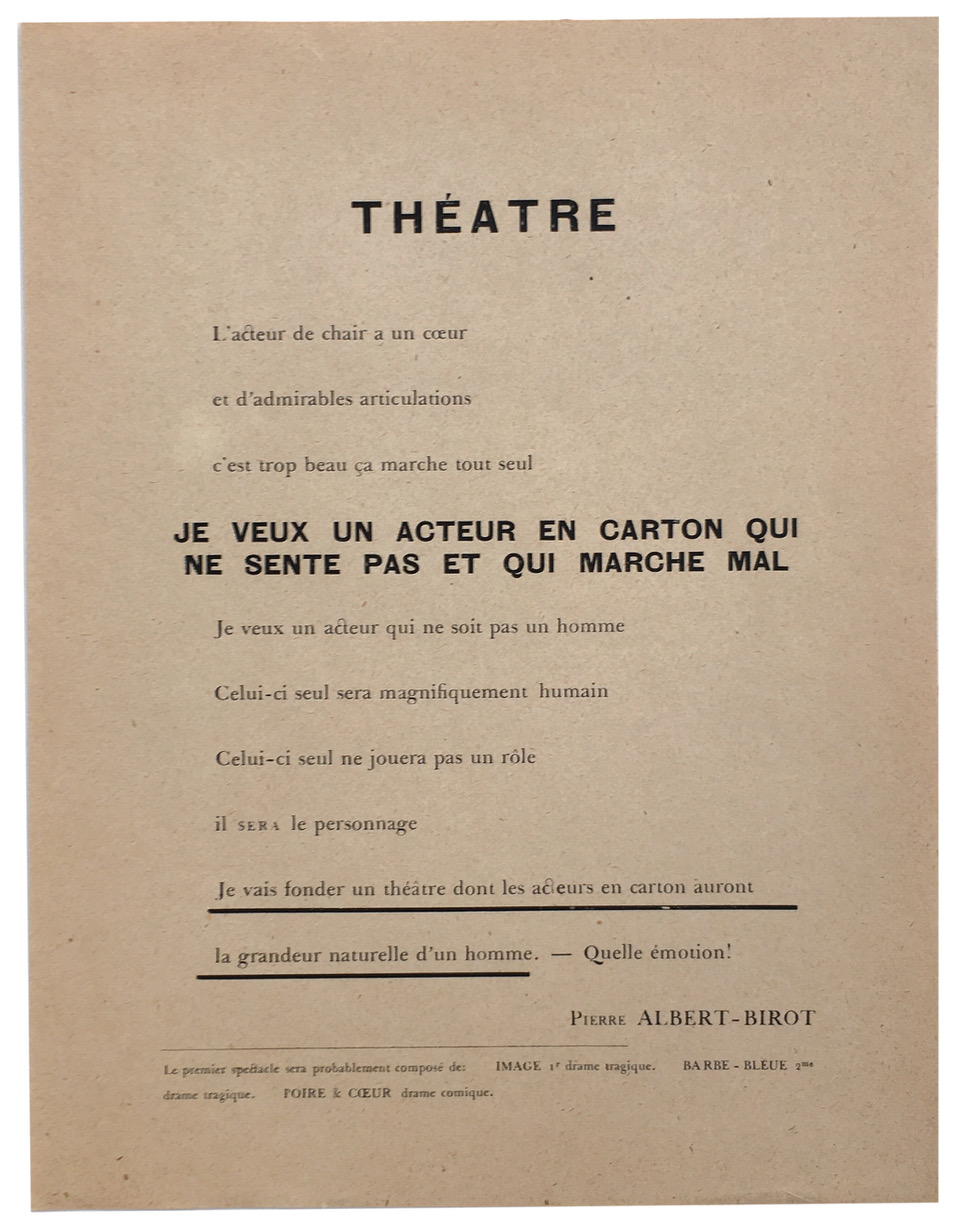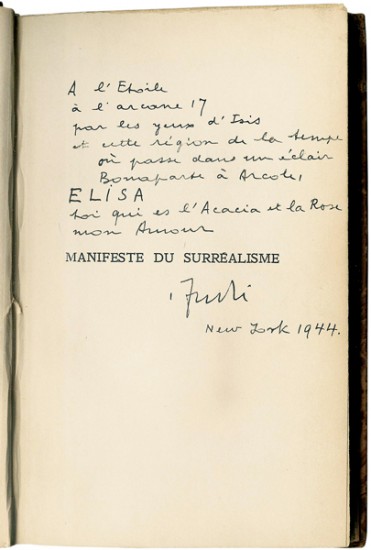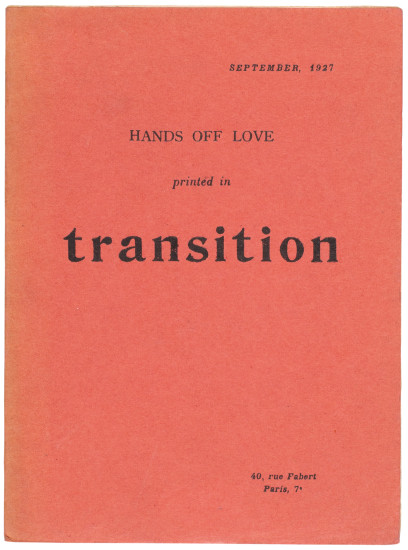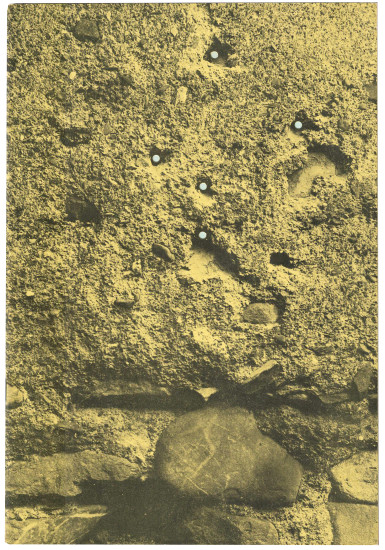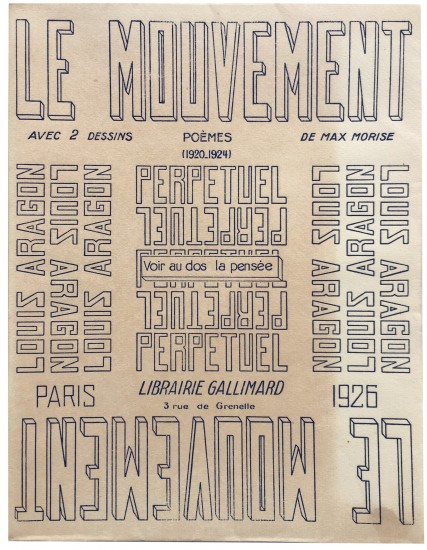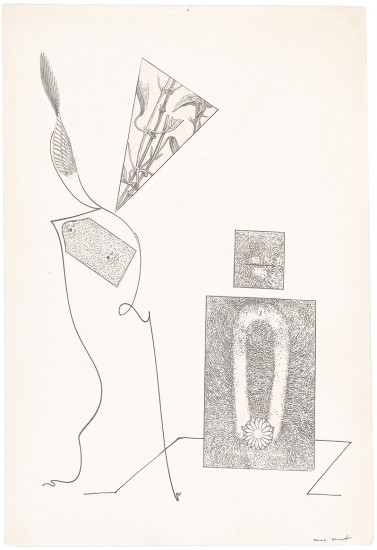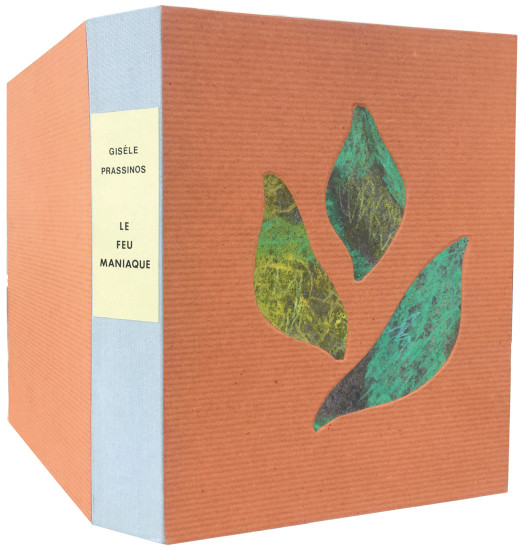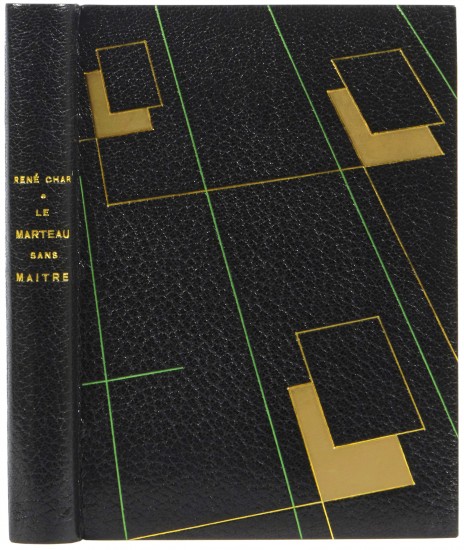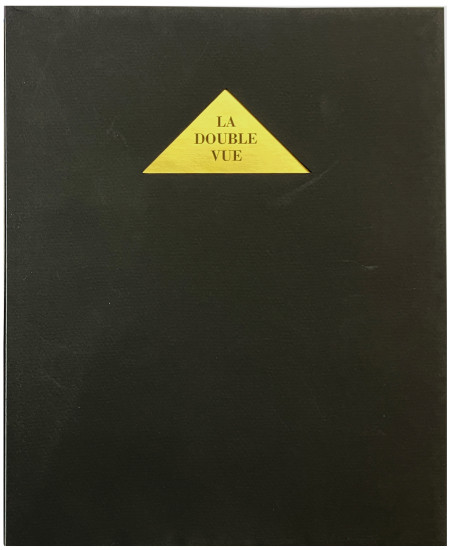Paris. No. 1. Novembre, 1924. (All Published)
Albert-birot, Pierre & Roch Grey (Baronne Hélène d'Oettingen)
Paris. Est en vente chez Jean Budry. 1924
Pierre Albert-Birot's important and very scarce single issue Apollinairean Surrealist review.
'Paris', issued in a single number in 1924 by Pierre Albert-Birot, was issued the month after the publication of the first Apollinairean Surrealist manifesto (published on October 1st by Yvan Goll) and the first Bretonian Surrealist manifesto (published on October 15th). 'Paris' took the part of the Apollinairean Surrealists and opens with Roch Grey's analysis and impassioned defence of Apollinaire, his position and most crucially his definition of the term he had coined originally (see below). Roch Grey's contribution is dated 'Paris le 19 Octobre 1924, four days after the publication of Breton's manifesto. Also included are poems by Pierre Albert-Birot, 'Théâtre', a single page poem (present also as a single loose sheet for distribution), and 'Deux Poèmes': 'Poème Rose' recto and 'Ange' verso. The interior of the rear wrapper features an advertisement for 'Exposition de François Angiboult' in December 1924 at Galerie Percier featuring 'Etoffes Peintes [and 'Jeu de Cartes' and 'Tableaux Brodés'] pour parer les femmes, pour dissimuler les hommes, pour exaspérer la vie jusqu'au sublime'; François Angiboult was another pseudonym, like Roch Grey, for Hélène d'Oettingen. Pierre Albert-Birot's collection 'La Lune ou le Livre des Poèmes' is also announced for 'le fin Novembre' of the same year.
Guillaume Apollinaire had first made use of the neologism 'sur-réalisme' in the program notes to Erik Satie's 1916 ballet 'Parade' before he subtitled his own drama 'Les Mamelles de Tirésias', 'drame Surréaliste', in 1917. Despite Apollinaire's coinage, the word 'Surréaliste' did not enter common usage until the 20s and the issue of the various Surrealist manifestoes (in 1924), at which point intellectual controversy debated the definition of the word, whether Apollinaire was a Surrealist, the manner in which Surrealism differed from his Surrealism and so on. Breton (and his camp) took the view that Surrealism was new and utterly different to anything previous, while his opponents - equally loud in defence of Apollinaire but rather less antagonistic - among them Ivan Goll, Paul Dermée and Pierre Albert-Birot maintained that a school of Surrealism had existed since Apollinaire's coinage of the term. Debate and Breton's prevarications aside, the neologism is Apollinaire's and Surrealism would not have existed in any of the forms it took ultimately without him and without 'Les Mamelles de Tirésias'.
Roch Grey, was one of the several pseudonyms of Hélène Miontchinska, Baronne d'Oettingen (1878 - 1950), known also as Léonard Pieux or Jean Cérusse (as a writer) or Edouard or, as here, François Angiboult (as a painter).
'Guillaume Apollinaire, inventeur du mot 'surréalisme' n'en donna qu'une sensation assez vague, diffuse, dans la préface des 'Mamelles de Tirésias'. Quand un homme a voulu imiter la marche, il a crée la roue qui ne ressemble pas à une jambe - il a fait ainsi du surréalisme sans le savoir ... Son surréalisme pris dans ce sens, fouetté come une toupie dirigée sans but précis, mais toujours vers le régions de l'inaccessible, d'incrée, d'un inconcevable dans le passé, pourrait donner un essort momentané à une volonté créatrice toute neuve, qui l'abondonnant sur place comme un stimulant absorbé au hasard d'une rencontre, saurait prendre le chemin du dehors ... '. (Roch Grey)
Pierre Albert-Birot's poem 'Théâtre' is present here, in addition to the version in 'Paris' and in matching format, dimensions and typography, as a loose sheet of thin tan unwatermarked wove paper (244 x 188 mm); it appears to be either a proof or for distribution.
'Paris' is very scarce outside France and COPAC locates no copies in the UK; we locate copies in the US at Yale, Indiana and Michigan only.
[not in Le Fonds Paul Destribats].
'Paris', issued in a single number in 1924 by Pierre Albert-Birot, was issued the month after the publication of the first Apollinairean Surrealist manifesto (published on October 1st by Yvan Goll) and the first Bretonian Surrealist manifesto (published on October 15th). 'Paris' took the part of the Apollinairean Surrealists and opens with Roch Grey's analysis and impassioned defence of Apollinaire, his position and most crucially his definition of the term he had coined originally (see below). Roch Grey's contribution is dated 'Paris le 19 Octobre 1924, four days after the publication of Breton's manifesto. Also included are poems by Pierre Albert-Birot, 'Théâtre', a single page poem (present also as a single loose sheet for distribution), and 'Deux Poèmes': 'Poème Rose' recto and 'Ange' verso. The interior of the rear wrapper features an advertisement for 'Exposition de François Angiboult' in December 1924 at Galerie Percier featuring 'Etoffes Peintes [and 'Jeu de Cartes' and 'Tableaux Brodés'] pour parer les femmes, pour dissimuler les hommes, pour exaspérer la vie jusqu'au sublime'; François Angiboult was another pseudonym, like Roch Grey, for Hélène d'Oettingen. Pierre Albert-Birot's collection 'La Lune ou le Livre des Poèmes' is also announced for 'le fin Novembre' of the same year.
Guillaume Apollinaire had first made use of the neologism 'sur-réalisme' in the program notes to Erik Satie's 1916 ballet 'Parade' before he subtitled his own drama 'Les Mamelles de Tirésias', 'drame Surréaliste', in 1917. Despite Apollinaire's coinage, the word 'Surréaliste' did not enter common usage until the 20s and the issue of the various Surrealist manifestoes (in 1924), at which point intellectual controversy debated the definition of the word, whether Apollinaire was a Surrealist, the manner in which Surrealism differed from his Surrealism and so on. Breton (and his camp) took the view that Surrealism was new and utterly different to anything previous, while his opponents - equally loud in defence of Apollinaire but rather less antagonistic - among them Ivan Goll, Paul Dermée and Pierre Albert-Birot maintained that a school of Surrealism had existed since Apollinaire's coinage of the term. Debate and Breton's prevarications aside, the neologism is Apollinaire's and Surrealism would not have existed in any of the forms it took ultimately without him and without 'Les Mamelles de Tirésias'.
Roch Grey, was one of the several pseudonyms of Hélène Miontchinska, Baronne d'Oettingen (1878 - 1950), known also as Léonard Pieux or Jean Cérusse (as a writer) or Edouard or, as here, François Angiboult (as a painter).
'Guillaume Apollinaire, inventeur du mot 'surréalisme' n'en donna qu'une sensation assez vague, diffuse, dans la préface des 'Mamelles de Tirésias'. Quand un homme a voulu imiter la marche, il a crée la roue qui ne ressemble pas à une jambe - il a fait ainsi du surréalisme sans le savoir ... Son surréalisme pris dans ce sens, fouetté come une toupie dirigée sans but précis, mais toujours vers le régions de l'inaccessible, d'incrée, d'un inconcevable dans le passé, pourrait donner un essort momentané à une volonté créatrice toute neuve, qui l'abondonnant sur place comme un stimulant absorbé au hasard d'une rencontre, saurait prendre le chemin du dehors ... '. (Roch Grey)
Pierre Albert-Birot's poem 'Théâtre' is present here, in addition to the version in 'Paris' and in matching format, dimensions and typography, as a loose sheet of thin tan unwatermarked wove paper (244 x 188 mm); it appears to be either a proof or for distribution.
'Paris' is very scarce outside France and COPAC locates no copies in the UK; we locate copies in the US at Yale, Indiana and Michigan only.
[not in Le Fonds Paul Destribats].
[2 bifolia + inserted leaf]. Small 4to. (250 x 194 mm). Printed text in French recto and verso throughout. Stitched as issued in original blue publisher's printed paper wrappers with titles in gilt to front cover, advertisements in black to interior of rear cover.
#47996

